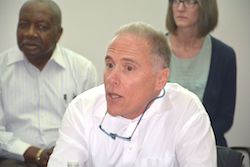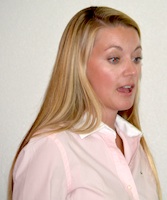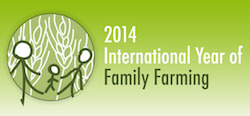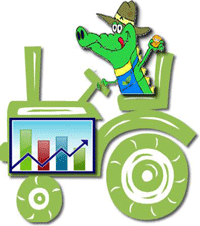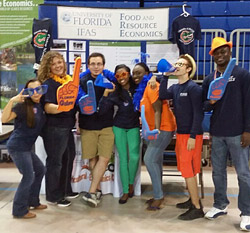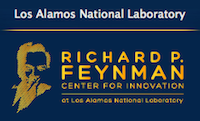Science is fun. Let me explain. During the Vedesian Life Sciences Los Alamos Media Tour we learned about a cool soil sampling technology coined Laser-Induced Breakdown Spectroscopy (LBIS). In an attempt to not use to much technical jargon, LBIS is a focused pulse laser beam that generates a microplasma (think spec or dot). 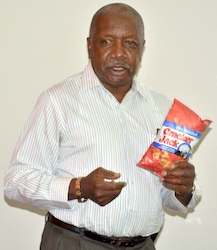 From here, the emission from the plasma wavelength uses a computer to determine the elemental breakdown of the soil sample. In other words, tells you what is in the soil (i.e. carbon, nitrogen, etc.).
From here, the emission from the plasma wavelength uses a computer to determine the elemental breakdown of the soil sample. In other words, tells you what is in the soil (i.e. carbon, nitrogen, etc.).
It is sometimes difficult to get others, including farmers, excited about science. That’s why Verdisian brought reporters to Los Alamos National Lab to learn about the science behind some of the greatest ag technologies ever discovered.
I learned about the LBIS technology from James Barefield with Los Alamos National Laboratory (LANL). The lab develops technology for the U.S. military and then looks for ways to modify the technology for other uses such as agriculture. This is why Verdesian and LANL have such a long-term, strong relationship. Verdesian’s core technology, Take-Off was first developed by LANL.
This system lives in a backpack and connects to a computer. So lets say you are worried about carbon levels in your soil. A farmer can point the laser on different areas of soil in his/her field and the soil breakdown shows up on the computer instantaneously. The farmer can then use this data to help determine his/her carbon plan. And once you’ve activated the plan, recheck the soil samples to see if the plan is working.
Here is a quick video of how LBIS works.
So let’s recap. The LBIS can be used to analyze carbon soil in samples. The preliminary data on carbon indicates similar trends when using high and low resolution LBIS systems. If there are variations in carbon between plots this can be analyzed. From here additional analysis will be needed to obtain quantitative answers but the technology provides a quick start to understanding the carbon in your fields.





